Spirea Wangutta: description, varieties, planting and care
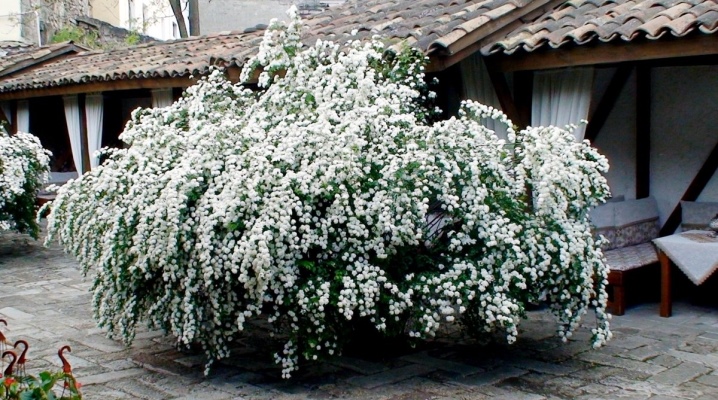
The decorative forms of the Wangutta spirea are distinguished by beautiful flowering, while planting and caring for them in the future is not particularly difficult and is quite within the power of every amateur gardener. The varieties "Pink Ice" and "White Bride", "Renaissance", Snow white have for many years been admired by true connoisseurs of the beauty of a Japanese or Chinese garden. It is worth figuring out what the characteristics of the shrub are, how to plant and care for it.

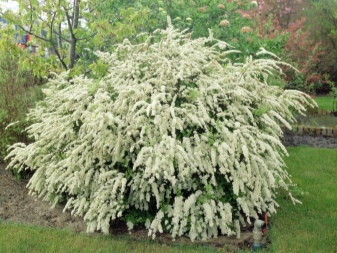
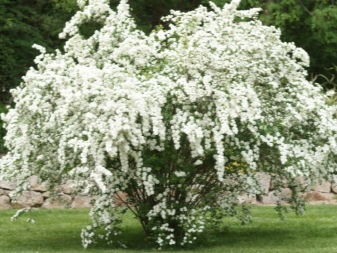

Peculiarities
Spirea Wangutta is an interesting hybrid belonging to the Pink family. This is a perennial shrub with a spreading, cascading or rounded crown, mainly curved shoots (there are erect subspecies). Botanical description indicates that the plant belongs to deciduous, highly decorative. The shrub shape makes it attractive for use in landscaping. A hybrid called Spiraea vanhouttei is obtained by crossing 2 other species: Spiraea cantoniensis and Spiraea trilobata. The resulting plant is also called meadowsweet by analogy with other spireas.
Interestingly, the emergence of a new species occurred naturally in nature, and such cases are not uncommon for this genus of plants. The shrub is rather large: it reaches 2 m in height and 3 m in diameter. It grows rapidly - in this the hybrid is noticeably superior to its parents.
In an adult plant, the branches take an arched shape and during the flowering period they look like the white foam streams of a fountain.
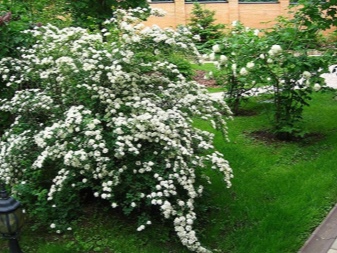

Shoots cover non-pubescent obovate leaves with 3-5 lobes and a serrated edge. The outer surface is dark green, before falling off its hue varies from yellow to orange-red. The lower part of the leaves is darker, dull-gray. Their length reaches 3.5 cm. Inflorescences are multiple, have a hemispherical shape, evenly cover the shoots along the entire length. The flowers have white petals and a yellow center and form on branches that are more than 2 years old.
In cultural breeding of spirea, Wangutta has been used since 1868 and is deservedly popular due to its excellent decorativeness. The shrub is shade-tolerant, but does not withstand a significant drop in atmospheric temperatures. The plant does not suffer from this feature: the frozen branches recover rather quickly. Early flowering is characteristic of the Vangutta spirea, in June-July, manifestations of remontantity are possible with the formation of a second wave of flowers in August.
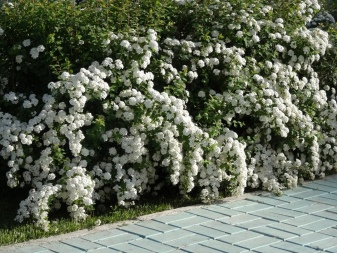

Varietal variety
The selective breeding of Wangutta spirea has presented the world with more than a dozen beautiful varieties with snow-white or pale pink flowers. The most popular are the most spreading forms that look especially decorative. Modern breeding offers the opportunity to admire semi-double flowering or wait for the second wave of inflorescence formation. However, all varieties of this amazing plant deserve attention. And the most popular ones should be considered in more detail.
- The White Bride. A luxurious, beautifully blooming variety that looks elegant and solemn thanks to the lush clusters of inflorescences. This plant is one of the most popular among landscape designers. The bush has a classic crown shape: umbrella-shaped with elegantly curved branches.The height of an adult plant reaches 2 m.
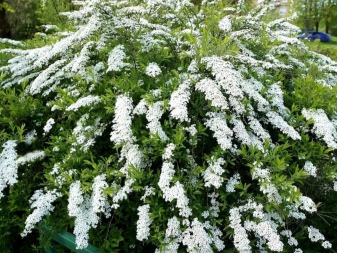

- Snow white. The name can be translated as "snow white". This variety of Canadian selection, has an average size: it reaches a height of 150 cm with a wide spreading crown with a diameter of up to 180 cm. The plant is distinguished by large expressive inflorescences of pure white color. A luxurious variety for planting as a decoration for a view from a window or an entrance group.
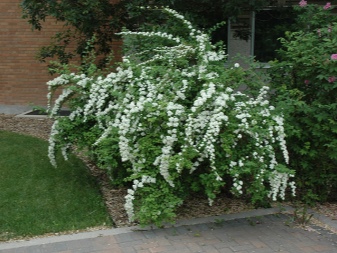
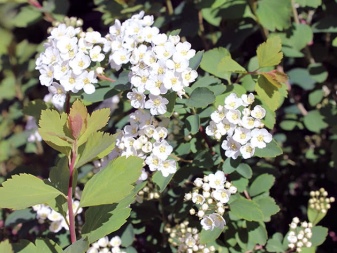
- "Renaissance". A variety bred to create spectacular "weeping" hedges. Belongs to the Wangutta group of spirits of American selection. In addition to lush flowering, it is also famous for its high resistance to the development of various diseases.
The optimal solution for planting along the boundaries of the site.
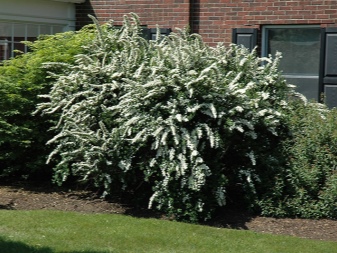

- Pink Ice. An unusual variety of Vangutta spirea with a lush, rounded crown, strewn with pale pink inflorescences in season. The originality is also added by the fact that the plant has a mosaic leaf color from nature. A bizarre pattern on them is formed by 2 tones: beige-brown and olive. The bush is very decorative, it lends itself well to cutting.
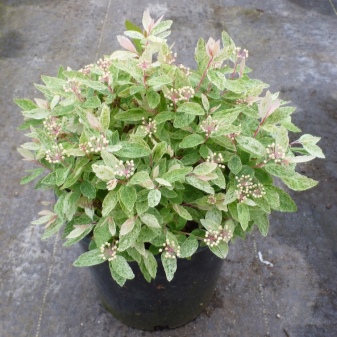
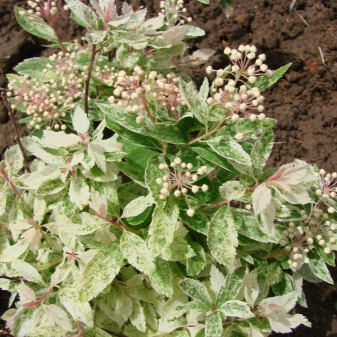
- Gold Fontaine. "Golden Fountain" is a variety of Wangutta spirea of Polish selection. He is one of the youngest and has not yet gained wide popularity, belongs to the slowly growing. The adult plant reaches 120 cm in height and 50 cm in diameter, compact. Weeping branches, hanging to one side, are covered in summer with lush corymbose inflorescences. This variety has unusual creamy leaves that look very unusual against the background of the surrounding greenery.


How to plant?
Planting the Wangutta spirea in open ground does not even begin with finding a place and creating a hole. The first step is always choosing a seedling. Since the plant is hybrid, in order to obtain the exact correct varietal shape, those plants that are presented in nurseries should be preferred. When choosing a seedling in a container, you need to pay attention to the state of its root system. There should be no traces of drying out, decay on it.
It is worth paying attention to the state of the bark. The surface of the shoots should be smooth, even, without deformation and other defects. It is recommended to select seedlings directly on the eve of their placement in the ground. The optimal time for planting is autumn or spring: before the first buds appear or after the foliage falls.
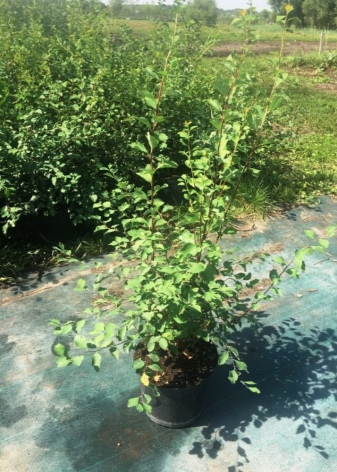

The selection of a place for the Wangutta spirea is also of great importance. In general, the plant is considered unpretentious, but its flowering - abundance, duration - largely depends on the type of soil. It is optimal to use places with soil acidity not higher than 5–6 pH, well-drained, with sandy or sandy loamy composition. Sunlight is also important for spirea, especially when grown in temperate climates. It's good if you can provide her with the longest possible daylight hours.
In the south, landing in the shaded part of the site is permissible.

Wangutta directly depends on the timing of planting spirea when it begins to bloom. Experienced gardeners prefer autumn planting after the leaves fall and get the first flowering of the bush in the spring. April seedlings will give inflorescences at the end of August. The planting process takes place in a specific order.
- At the chosen place, a planting pit is prepared with a diameter larger than an earthen lump with roots by 20 cm, but not less than 50 cm, including in depth. The bottom is lined with a 15 cm thick drainage layer; expanded clay, crushed brick can be used. If several holes are dug, a space of 0.7 m or more is left between them, or 0.5 m when forming hedges.
- The hole is allowed to settle for 2-3 days for the soil to settle. At this time, a planting mixture is being prepared, consisting of removed sod, half the amount of peat and fine river sand. All components are thoroughly mixed to obtain a composition with a homogeneous structure.
- The seedling is removed from the container or pot, the rhizome is lightly pruned, removing dry or decaying areas.Place in the center of the pit so that the root collar is above the level of its edges. The roots are covered with the prepared planting mixture, the top layer is carefully compacted. The plant is watered with warm, settled water. After that, the trunk circle is sprinkled with mulch abundantly.

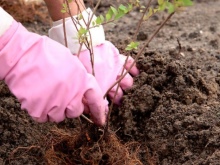
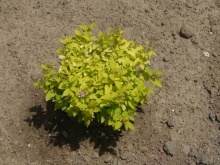
After planting, Vangutta spirea requires regular, up to 3 times a week, watering in the dry season, weeding and mulching the soil. This will ensure good plant survival.
How to take care of it properly?
Caring for the Wangutta spirea on the site differs little from what is required for other plants of this genus. The shrub is not too hygrophilous, watering from 2 years of planting is needed only in drought. During the period of bud formation, it is especially important not to exceed the required amount of moisture, otherwise the size and number of inflorescences will differ markedly from the norm. After flowering, you can return to the usual order of moisture application. Pruning is a good reason to water more.
It is recommended to feed the plant 2 times during the season. For the first time, fertilizers are applied immediately after the snow melts and the first buds appear. At this time, complex mineral mixtures are used.
In the fall, a second feeding is carried out on the basis of potassium-phosphorus preparations.
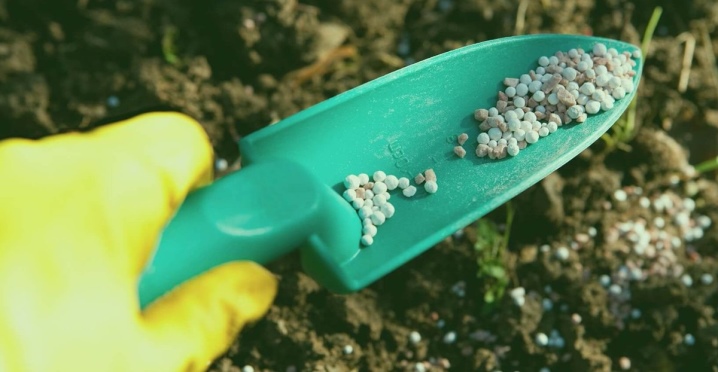
It is imperative to trim the Vangutta spirea: this stimulates the formation of new shoots, provides the necessary crown density. The first treatment is carried out on plants 3 years after planting, earlier this measure was not necessary. Decorative - shaping - pruning is recommended in the autumn after flowering. Shoots are shortened by no more than 1/4 of the total length.
For sanitary purposes, spring pruning is performed to help stimulate abundant flowering. In this case, all shoots that have not survived the winter, broken, dried branches are pruned. After 7–8 years, a rejuvenating procedure can be performed. In this case, all shoots are cut almost to the root, only a 15–20 cm high base remains on the surface.
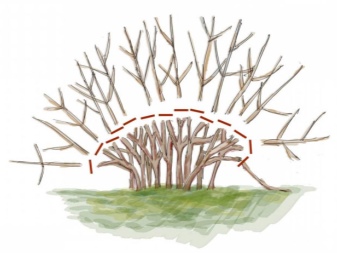

When forming hedges, a haircut has an important formative value for the spirea. In this case, sanitary pruning is performed as needed, but without affecting the flower buds on 2-year-old shoots. In autumn, they are pruned more intensively, removing shoots with faded brushes. Besides, Due to the density of planting, plants in hedges are much more likely to need to trim the crown affected by insects or diseases.
Young plants planted in the fall require the obligatory creation of a shelter for the winter. They are tied with non-woven material, and then covered with spruce branches. Covering is not necessary from 2 years after planting. The bush is winter-hardy, able to withstand frost down to −45 °, after freezing of the shoots, it quickly restores its former splendor.
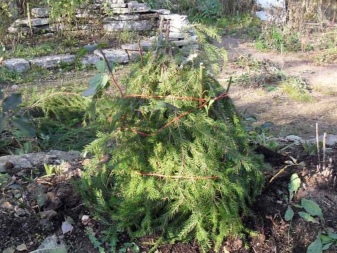
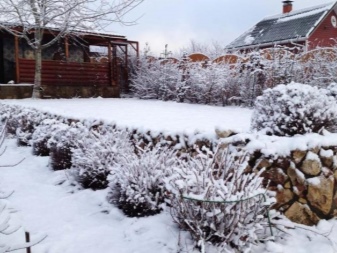
Reproduction methods
The seed propagation method is poorly suited for hybrid species due to the fact that the resulting plants often turn out to be very different from the parent bush. In addition, the seeds of the Wangutta spirea do not have a high germination rate, it is only about 5%. But if you want to experiment, you can do spring sowing in a small greenhouse. The approximate waiting time for seedlings is 2 weeks, after 3 months the seedlings are picked, planting in open ground is carried out only the next year.
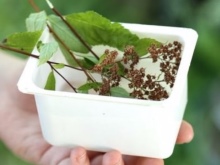
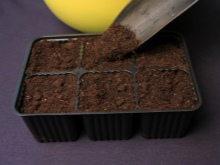
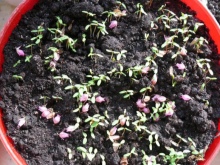
Cuttings are a much more popular breeding method for the Wangutta spirea. It is produced in the fall after the flowering period has passed, having waited 2 weeks after the buds fall off. For cutting cuttings, shoots with a semi-lignified structure, healthy and strong, are selected. Rooting is carried out in containers filled with a peat-sand mixture. Placing seedlings in a micro-greenhouse will help speed up the process.
When young leaves appear on the cuttings, you can plant them in separate containers.
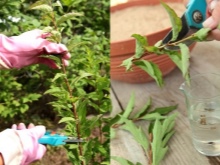
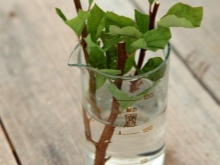

When grafting, planting in the ground is recommended only for the next year. The resulting plants retain all the properties of the parent bush. There are other ways that do not deprive the hybrid of decorativeness. For example, reproduction by layering with the addition of side shoots into the ground with their subsequent rooting. Such a planting is formed in early spring, the branch is laid in a prepared trench, fixed with a bracket. It is possible to separate the new plant from the mother bush only the next year.
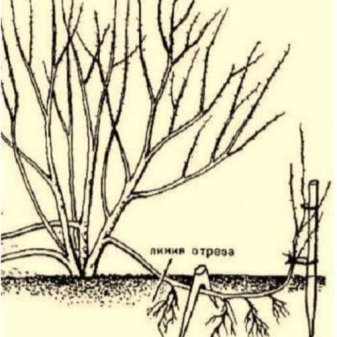

Dividing a bush is a method used if a transplant is being made. A completely dug out bush is divided into several parts so that each lobe retains the root part and 4–5 shoots on top. Slices must be treated with charcoal, then the plants are planted in the same way as in the usual placement on the site of the spirea in a container.


Diseases and pests
Spirea Wangutta is quite resistant to various types of diseases and pests. Excessive soil moisture can weaken the immune system and increase the risk of infection. For prevention purposes, it is recommended to monitor the abundance of watering, drain the soil if necessary. It will be useful after the snow melts, but before the formation of buds, to sanitize the bushes with Fitoverm solution at a dosage of 1 ampoule per 10 liters of water. This volume is enough for 5 plants.
Such spraying prevents the appearance of kidney gall midges, garden snails, common and beet aphids. To identify dangerous insects, you need to regularly inspect the bushes - this is how you can find a spider mite or sawfly. Affected shoots are cut off, the separation sites are treated with garden pitch. Sick branches are to be burned, the rest of the bush is sprayed with fungicidal compositions: 0.3% karbofos and its analogues.
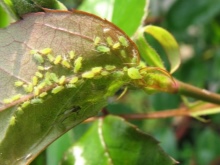
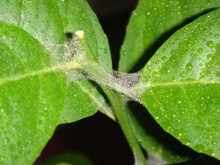
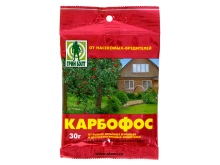
To avoid the appearance of fungal spores on the plant, to prevent infection with powdery mildew, it is recommended to carry out preventive treatment even before flowering.
For this, Bordeaux liquid is used, consisting of a 1% solution of copper sulfate and lime.
Use in landscape design
In landscape design, Wangutta spirea is actively used in single plantings near artificial reservoirs. The weeping form of the bush is in good harmony with the water surface and gives additional decorative effect to the site during the flowering period. This plant goes well with conifers as a background. You can select both decorative forms and classic spruces, pines, thuja. The duet of Wangutta spirea with flower beds looks spectacular. Here the role of the background plant will go to the weeping bush.

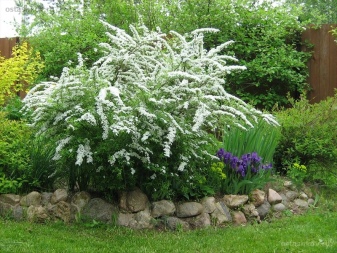
Solitaire landings are also relevant. If you place the Wangutta spirea in the center of a lawn or flower garden, it will become the main element that always comes to the fore. Varieties that give repeated flowering are especially good in this quality. As part of hedges, this species keeps its shape remarkably and looks very expressive. But it is important when planting to observe the distance between the bases of the bushes: it should be 0.5 m.
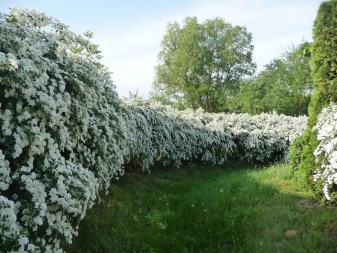

Other abundantly flowering shrubs are well suited as companions to Wangutta spirea. It can be lilac or mock orange, which will provide additional decoration for the composition. It is good if you can pick up varieties with earlier and later flowering periods, allowing you to avoid exposing the garden after the petals fall on the spire.
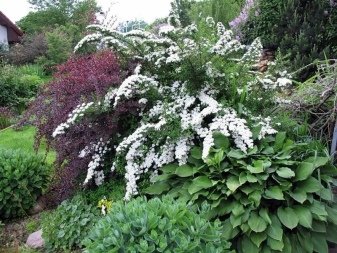
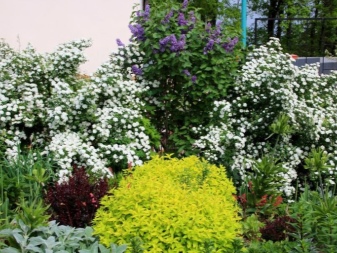
For more information on Wangutta's spirea, see the next video.



































































The comment was sent successfully.